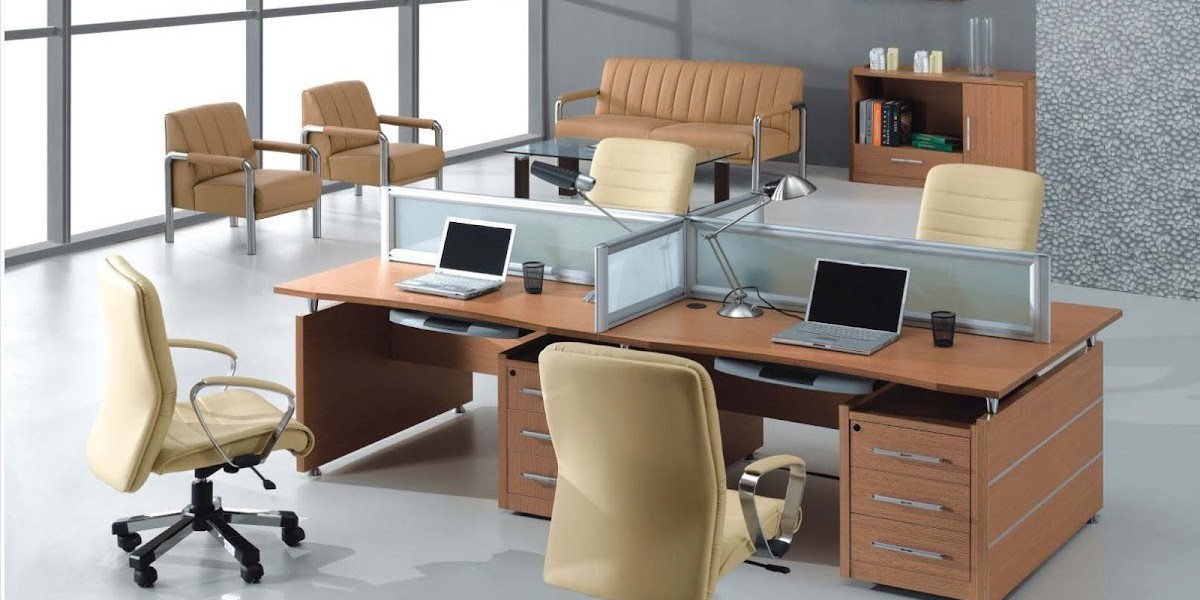Introduction
The rise of hybrid work models—which combine in-person and remote work—has transformed the way businesses design their offices. With employees splitting their time between home and office, companies need flexible office furniture that supports both collaboration and individual work. The right furniture ensures that hybrid workspaces remain functional, welcoming, and adaptable to changing needs.
In this article, we explore office furniture solutions for hybrid workspaces, focusing on how businesses can balance productivity, comfort, and flexibility for employees working across multiple environments.
1. Hot Desking Furniture for Flexible Use
In hybrid offices, hot desking systems allow employees to use any available desk when they come to the office, promoting flexibility and space efficiency.
Recommended Hot Desking Solutions:
Shared Desks with Storage Lockers: Give employees secure storage for personal items between shifts.
Mobile Chairs: Easily move seating to accommodate different setups.
Reservation Apps: Use desk booking systems to manage workspace availability.
Why It Matters:
Hot desking ensures efficient space utilization, making it easier to manage a rotating workforce.
2. Modular Workstations for Adaptable Layouts
Hybrid offices require layouts that can adapt to different tasks and team sizes. Modular furniture provides the flexibility to rearrange desks and seating areas as needed.
Modular Furniture Ideas:
Reconfigurable Desks: Arrange desks for individual work or group collaboration.
Modular Lounge Areas: Use sectional seating to create meeting or relaxation spaces.
Mobile Whiteboards: Move boards around for brainstorming sessions or presentations.
Why It Matters:
Modular workstations make it easy to reconfigure the office based on changing team needs.
3. Sit-Stand Desks for Active Workdays
Hybrid employees need sit-stand desks that allow them to switch between sitting and standing, promoting health and productivity.
Sit-Stand Desk Features:
Memory Height Settings: Save preferred heights for quick adjustments.
Integrated Power Outlets: Keep devices charged without cable clutter.
Anti-Fatigue Mats: Provide cushioning during standing periods.
Why It Matters:
Sit-stand desks encourage movement, improving focus and well-being during workdays.
4. Comfortable Seating for Long Work Hours
Ergonomic chairs are essential for hybrid workers, who may spend long hours at their desks when working from the office.
Ergonomic Chair Features:
Lumbar Support: Reduces back strain for extended periods of sitting.
Adjustable Armrests and Seat Height: Ensure personalized comfort.
Breathable Mesh Upholstery: Keeps employees cool throughout the day.
Why It Matters:
Comfortable seating helps employees stay focused and productive without fatigue.
5. Collaboration Spaces for Hybrid Meetings
With some employees working remotely, collaboration spaces in hybrid offices need to accommodate both in-person and virtual meetings.
Collaborative Furniture Ideas:
Conference Tables with Multimedia Integration: Support hybrid meetings with built-in screens and microphones.
Soft Seating for Informal Meetings: Create casual spaces for brainstorming.
Mobile Partitions: Divide spaces for privacy or open them up for larger groups.
Why It Matters:
Collaboration spaces ensure seamless communication between remote and in-person teams.
6. Breakout Zones for Rest and Recharge
Breakout zones provide hybrid employees with a place to recharge between tasks, preventing burnout and improving mental well-being.
Breakout Zone Furniture:
Bean Bags and Poufs: Offer comfortable seating for quick breaks.
Coffee Tables and Armchairs: Create spaces for informal conversations.
Recreational Areas: Add ping-pong tables or quiet corners to promote relaxation.
Why It Matters:
Breakout zones boost morale and promote work-life balance for hybrid workers.
7. Technology-Integrated Desks for Remote and In-Person Work
Hybrid employees rely on technology-integrated desks to stay connected and productive, whether working from home or in the office.
Tech-Integrated Desk Features:
Wireless Charging Pads: Keep devices powered without messy cables.
Built-In USB Ports: Support multiple devices simultaneously.
Cable Management Systems: Prevent clutter and keep desks organized.
Why It Matters:
Technology-integrated desks streamline workflows and support hybrid productivity.
8. Personal Lockers for Hybrid Employees
With employees coming and going, personal storage lockers ensure that everyone has a secure place to store their belongings.
Locker Ideas for Hybrid Offices:
Digital Lockers: Use keypads or RFID cards for secure access.
Mobile Storage Units: Move lockers to different parts of the office as needed.
Custom Lockers with Branding: Add a personal touch with company colors or logos.
Why It Matters:
Personal lockers create a sense of belonging and security, even for hybrid employees.
9. Biophilic Furniture for Enhanced Well-Being
Biophilic design remains essential in hybrid offices, promoting well-being by connecting employees with nature.
Biophilic Furniture Ideas:
Living Wall Dividers: Bring greenery into workspaces while providing privacy.
Desks with Planters: Incorporate small plants into workstations.
Wooden Tables and Natural Elements: Add warmth and texture to the office.
Why It Matters:
Biophilic design improves mental well-being and reduces stress, benefiting hybrid employees.
10. Minimalist Furniture for Hybrid Work Efficiency
Minimalist design helps keep hybrid workspaces organized and clutter-free, promoting focus and efficiency.
Minimalist Furniture Ideas:
Neutral-Toned Desks and Chairs: Create a calm and focused atmosphere.
Simple Shelving Units: Keep essentials organized without overwhelming the space.
Compact Workstations: Maximize small office spaces without compromising functionality.
Why It Matters:
Minimalist furniture promotes mental clarity and supports productivity.
Conclusion
Designing a workspace for hybrid employees requires flexibility, functionality, and comfort. From modular workstations to technology-integrated desks, the right office furniture helps businesses adapt to the changing needs of in-person and remote teams. By investing in ergonomic, collaborative, and biophilic furniture, companies can create a balanced environment that supports employee well-being and productivity.
Explore our hybrid office furniture collections today to design a workspace that empowers your employees—no matter where they work.








